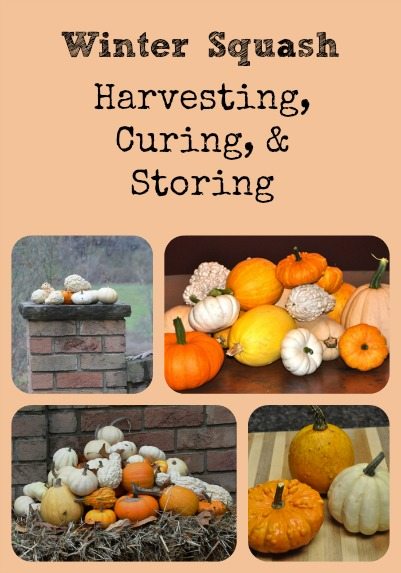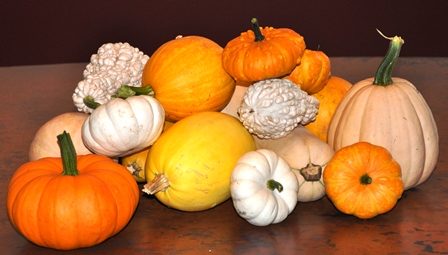I love harvesting winter squash – as we’re rushing to get all the other garden veggies harvested and 
Harvesting
Winter squash should be harvested after the fruit turns a deep color and the rinds harden (usually during September and October), but definitely before heavy frost. The fruits should be cut from the vine carefully, leaving one to two inches of stem attached, and care should be taken not to damage or bruise the fruit. Immature, damaged, or bruised fruit will not keepas long in storage and should be used first.
Curing
A lot of folks don’t seem to know this, but most winter squash do better in storage if they are cured; the exceptions to this are acorn, sweet dumpling, and delicata squash (these varieties can go directly into storage). To cure the other varieties of winter squash, simply keep the squash at room temperature (around 70 degrees) for 10 to 20 days. If the weather is good, we generally let ours cure on the screened porch for a couple of weeks.
Storing
After curing, winter squash should be transferred to a dry, cool (50 to 55 degrees) place like a basement for long-term storage. It’s best to store the squash in a single layer and not touching each other to prevent the spread of any rot. Any squash that have soft spots, cuts, breaks, or are missing stems should be used first because they will spoil first in storage. Squash that have been cured and stored properly should last in storage for up to six months. If they’re stored at warmer temperatures, they don’t last as long.

Marilyn Spafford says
I love learning the best ways to garden and preserve the veggies in the proper way. I didn’t know of curing the squash before. Is it best to lay your squashes on a good layer of straw or just the cool dirt? Can I store them in my crawl space?